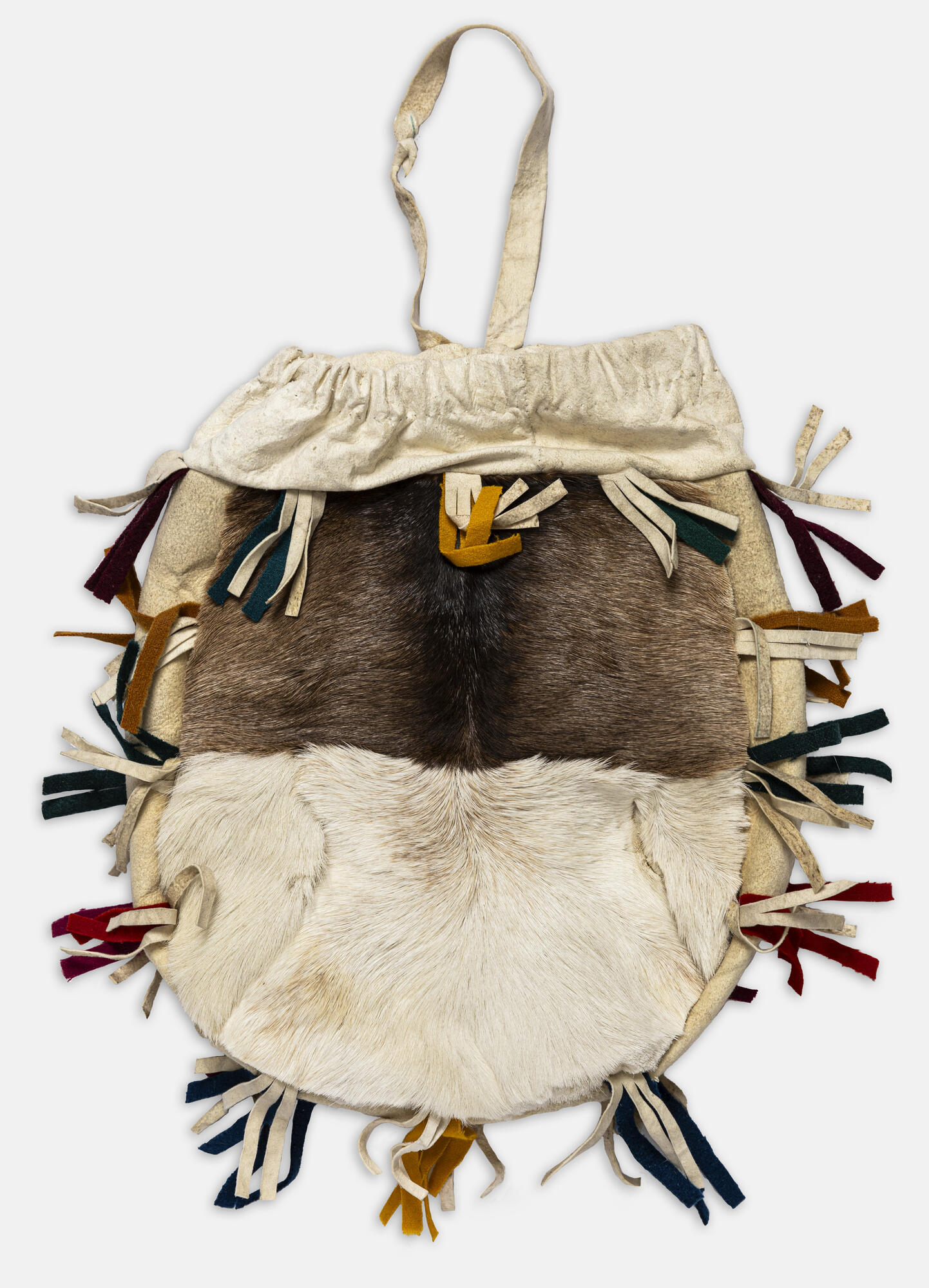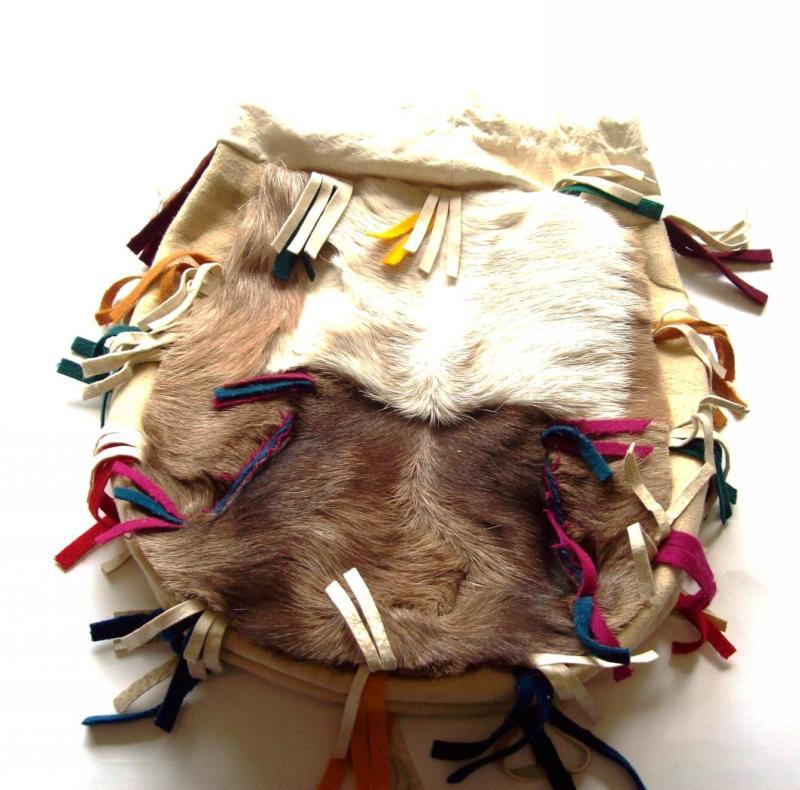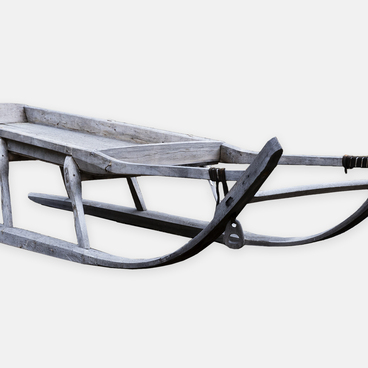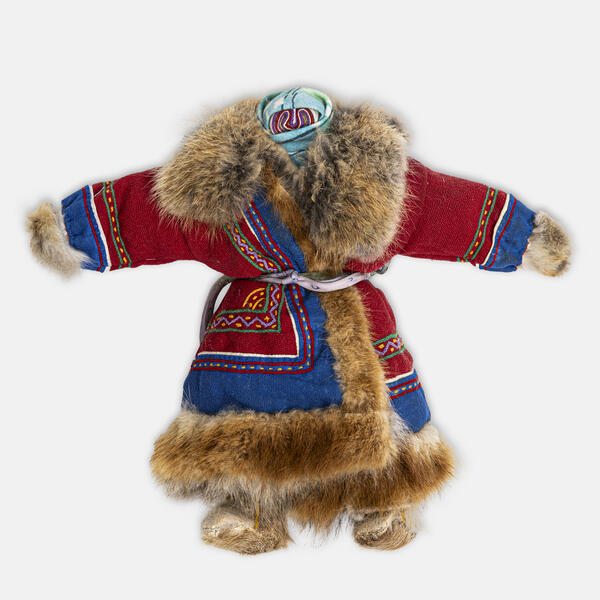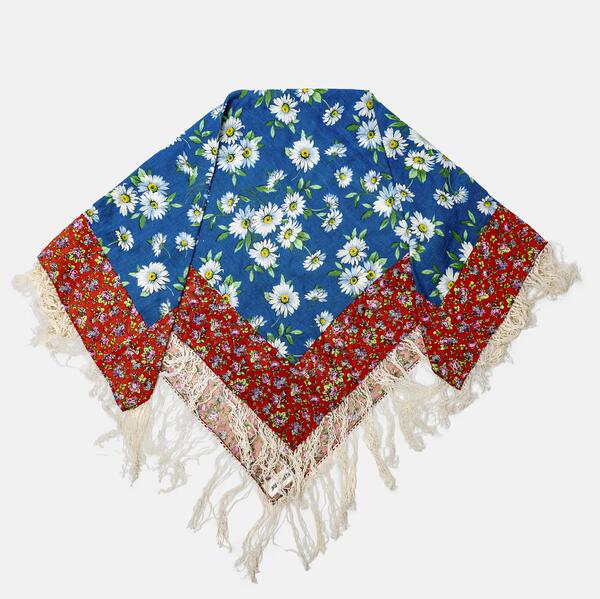Fur bags are among the most distinctive elements of the culture of the northern peoples. They are very convenient for nomads because they take up little space inside the tent and sled especially as their contents are consumed. They can also be used for thermal insulation and as bedding.
Fur bags are sewn of skin from deer foreheads or kamus — skin from the lower leg of a deer. There are two types of bags, designed to keep household items and sewing accessories. The bags differ in cut and décor but consist of the same parts: a mouth at the top, front, back, bottom, and side walls.
The bag for storing sewing accessories has a semi-oval shape and is tied with a drawstring. The skins from deer foreheads are sewn together in such a way that the pile is directed downwards. At the top, the walls have straight edges, and at the bottom — rounded ones. The entire back and front walls can be surrounded with a decorative band, as well as fringes made of rovduga — reindeer suede. The sides and the bottom are sewn from rovduga or a strip of low pile fur.
Bags are decorated with fur and leather mosaics, decorative patterns, beads, and metal pendants — their sound is believed to protect the owner from the evil forces of the Lower World. Like all fur products, bags are made by hand and sewn with tendon threads. For the peoples of the North, a woman’s beauty lies primarily in her ability to run the house, sew clothes, and care for her family. The decisive factor in the choice of a bride was often not the beauty of her face but the elegance of her sewing.
By the age of 13–15, each young woman should have several fur bags. During long winter evenings, women sew clothes for the whole family. They treasure every piece of leather, fabric, and fur and keep them in their sewing bags. A woman always brings along her sewing bag which remains the main attribute of her craft throughout her life. It is kept on the women’s side of the tent.
The bag from the museum’s collection consists of
four parts. The upper part of the bag and the sides are made of rovduga, the
front and back parts are made of reindeer forehead skins. Pieces of dark green,
burgundy, and red cloth are inserted where the pieces are sewn together.
Rovduga fringes are sewn into the side seams, and the top of the bag is tied
with a leather cord.
